Featured Contributor Rayya Chek
Designer (and B-boy) Rayya Chek offers a deep dive into the evolution of Windows Operating Systems by sharing his research from The Archive.
1985: Design for Tiles
Windows 1.0 was the first release of the Windows operating system for personal computers and included programs like Calculator, Paint, and Notepad, which are now staple applications to Windows OS installations. Initially, it had a tiled windows system rather than the familiar overlapping windows system, but som UI elements have persisted in current installations.
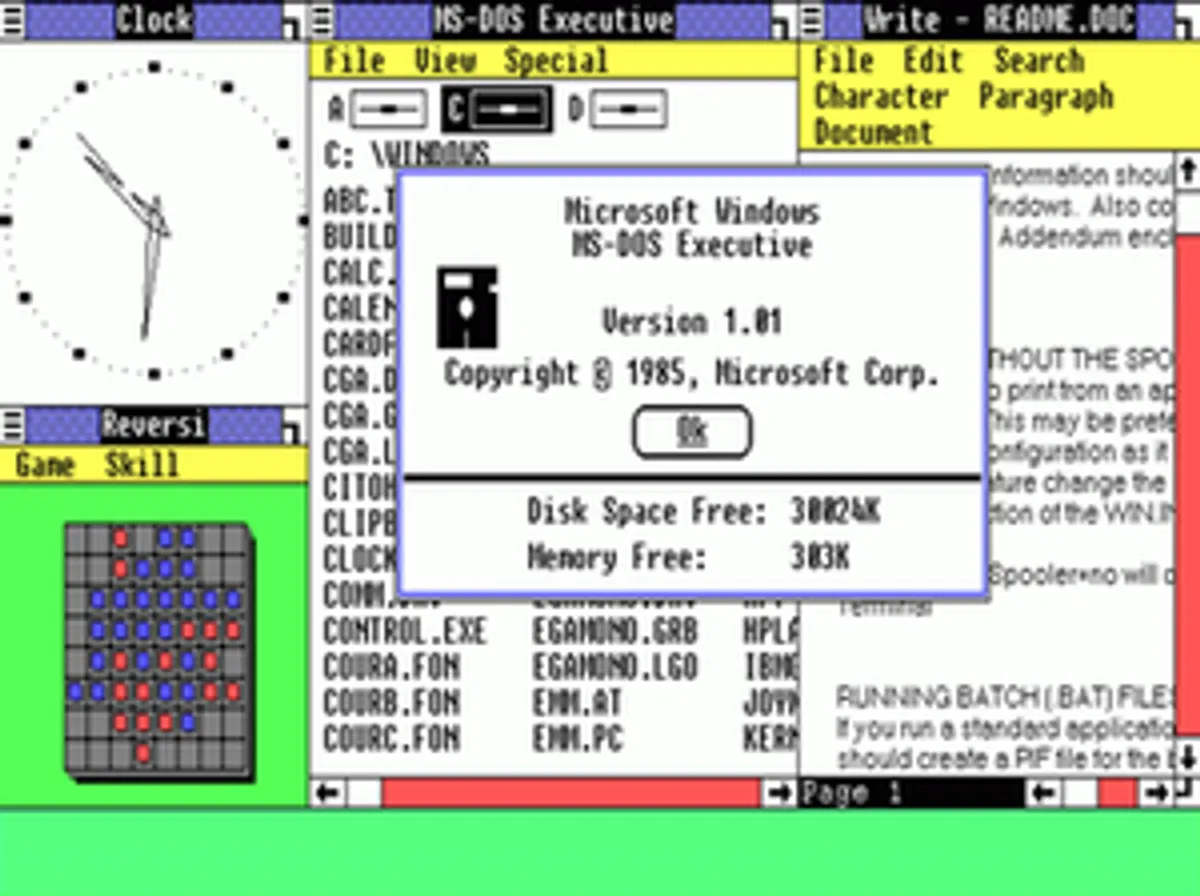
Windows 1.0 operating system interface, 1985
1990: Clickable Icons
The second version of the Windows 3x series, this operating system introduces new features like clickable icons which opens up to group windows, or windows within windows. Later updates added Audio capture and CD-ROMs support. Famed Apple icon designer Susan Kare also contributed to Windows 3.0, the preceding version, through the development of desktop icons and buttons for the OS. This operating system was a major success as it was widely sold and adopted by the public.
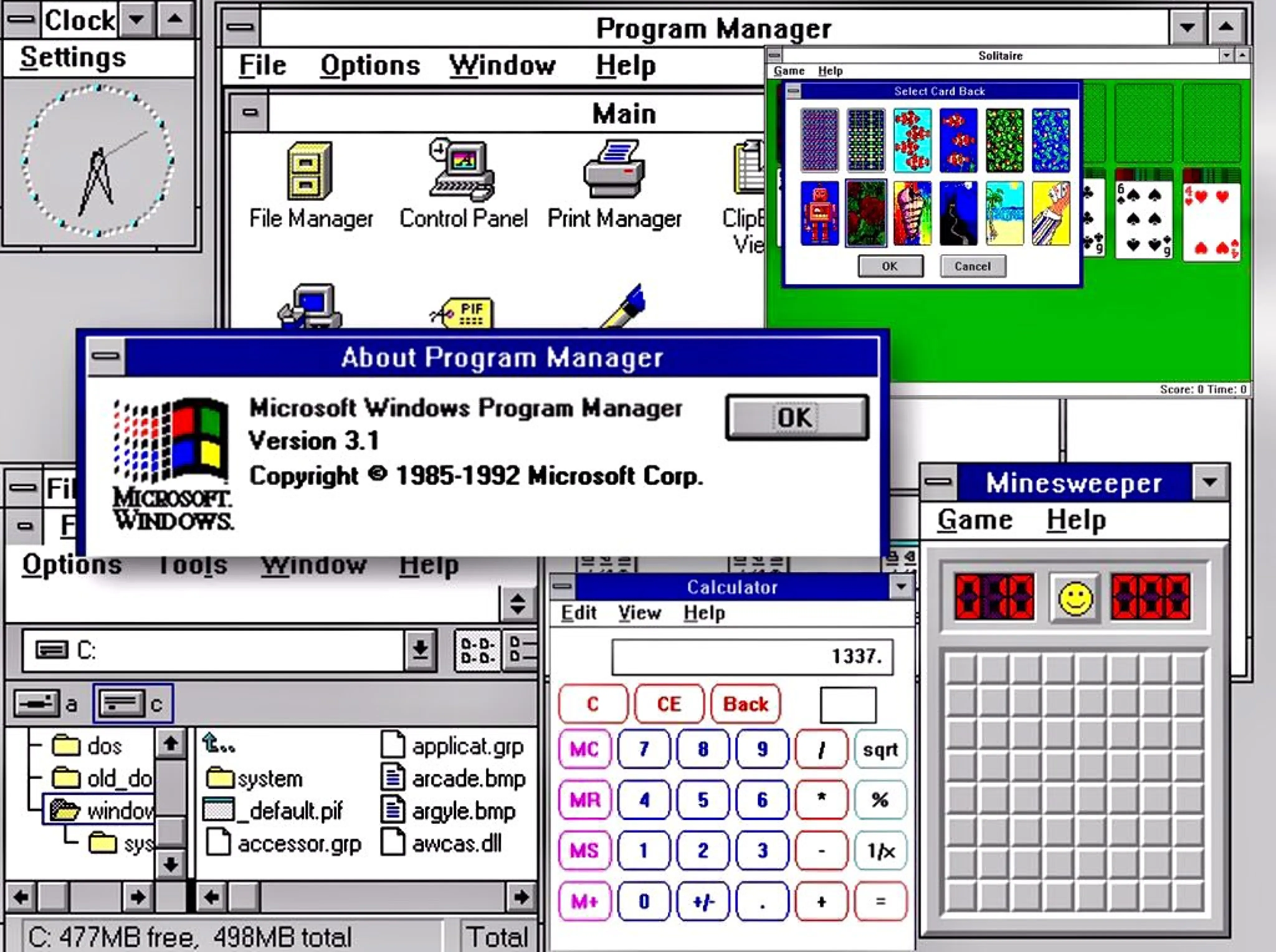
Windows 3.1 interface, 1990
1998: Windows 98 Pop Culture Classic
Part of the Windows 9x series, Windows 98 had many improvements over its predecessor, Windows 95, such as expanded hardware support, and file support system (Fat32). The 9x series is ingrained in pop-culture as one of the early web-based aesthetics, especially during the 2010s as internet usage boomed.
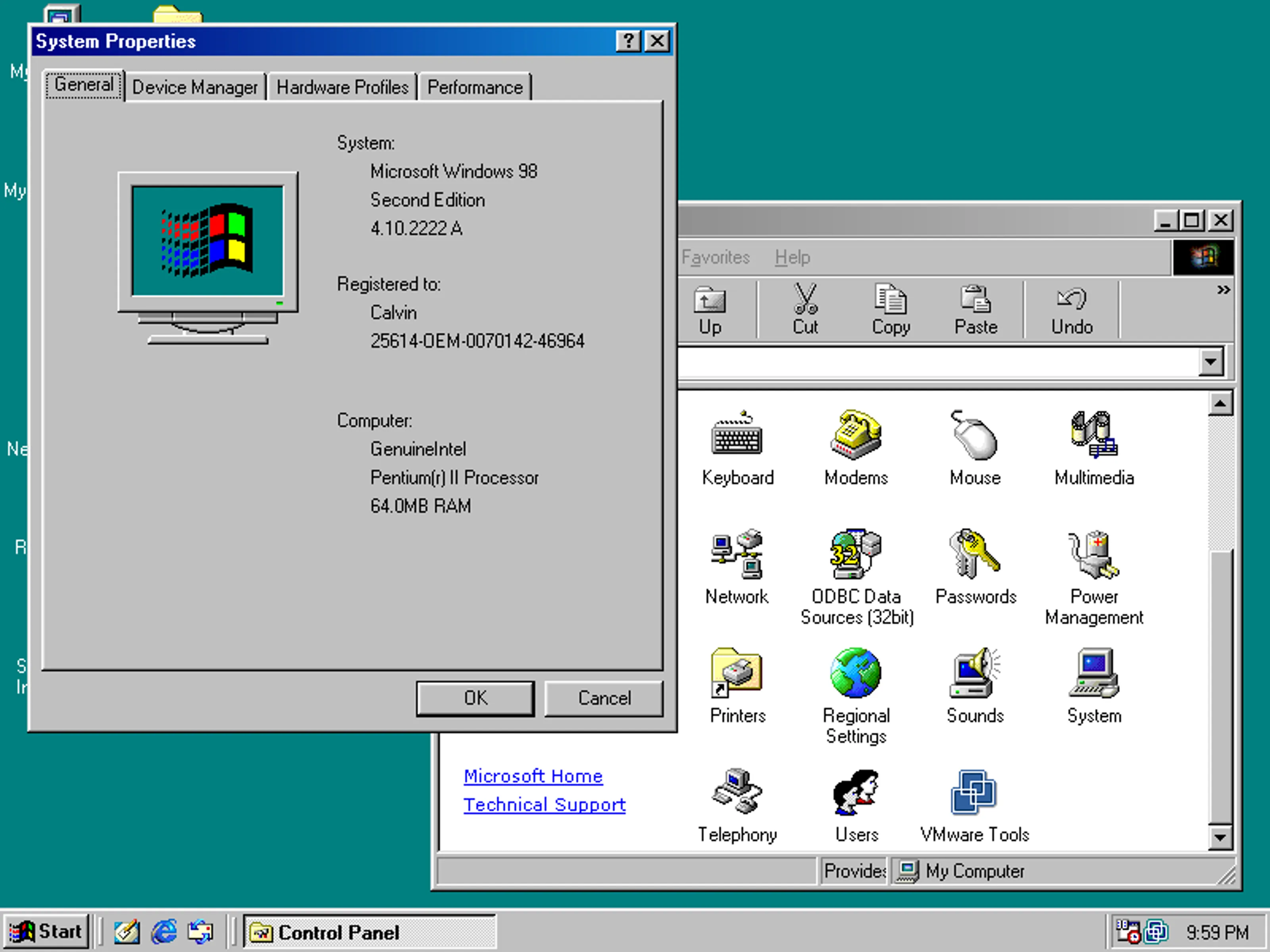
Windows 98 interface, 1998
2001: Windows XP Offers a Landscape with Blue Skies
This Windows operating system was critically acclaimed for its improved functionality in performance, user interface and multimedia support. It had the longest OS support, of 12 years. The changes in UI comes in the form of a revamped Start menu, Taskbar and ClearType, which improved the smoothing of fonts on the LCD system. The Windows XP desktop background is the iconic green hill under blue skies (Bliss). The base icons were designed by The Iconfactory.

Windows XP interface from 2001
2006: New Glass Opaque UI Style
This operating system (OS) pioneered a new UI style called Windows Aero, implementing the glass opaque style on the desktop windows and deviating from the XP aesthetics. Windows Aero (Authentic, Energetic, Reflective and Open) standardized the visual guidelines such as using Segoe UI as the base font but also has a phrasing guide to help the user with the functionality of the OS.
Unlike Windows XP and 9x, the OS received mixed reviews due to factors such as costs, performance and hardware requirements, leading to Windows creating Windows 7. It addressed many of Vista's criticisms but retained the Aero visual style. The Iconfactory designed the base icons for Windows Aero.
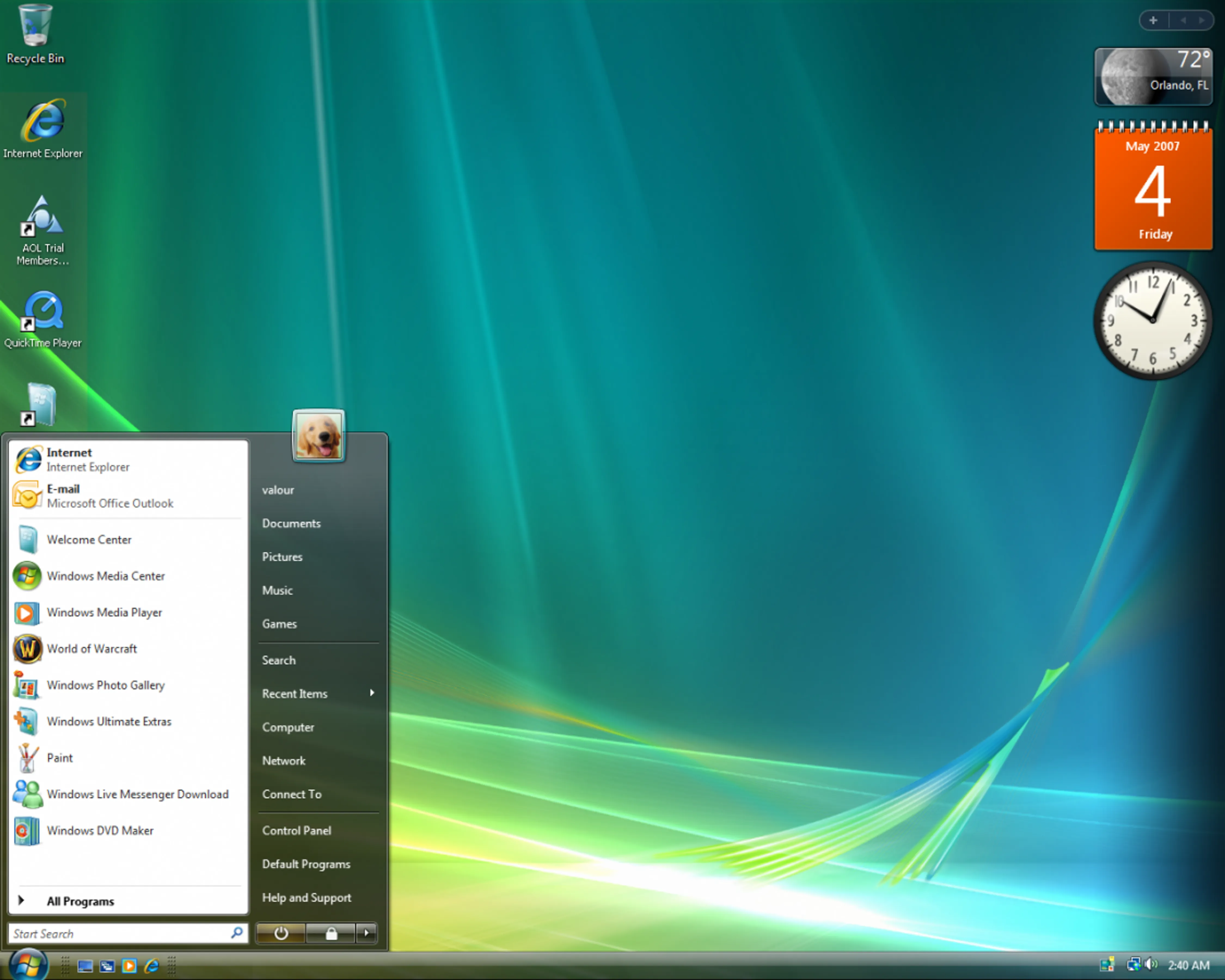
Windows Vista interface from 2006 with glass opaque style
2013: Inspired by Touch-based Systems
The second edition to the Windows 8 series (its predesessor was Windows 8), Windows 8.1 was released to address issues such as the Start menu, and user functionality between the desktop and touch-based systems like tablets. This OS is more experimental as it attempted to adopt a new design language (Metro), styled after public transportation signs. Metro emphasized on simple, tiled geometric shapes, and large text to portray the idea of modernity and sleekness. The Metro design language was outright distinct from the previous OS, estranging their audience from the familiar Windows Aero.
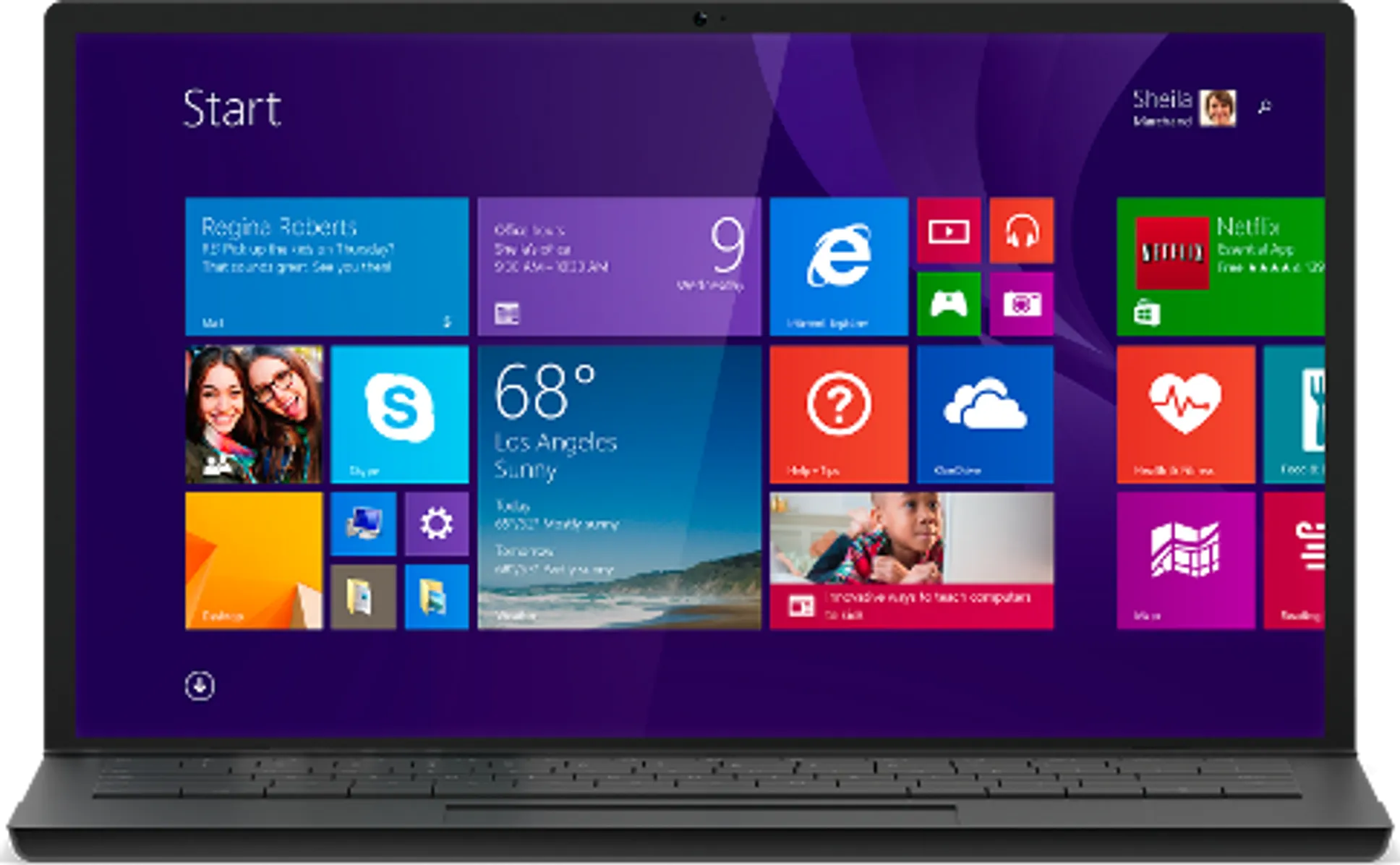
Windows 8 Series interface designed in 2013
About Rayya Chek
Rayya Chek offered this research while serving as a Scholar for The People's Graphic Design Archive. He's a designer, dancer and student at heart based in Boston.
Rayya recently completed a dual degree from Tufts University in Sociology and Fine Arts from the School of Museum of Fine Arts (SMFA). As a designer, he specializes in print and book design, using Adobe Illustrator, Indesign and Photoshop. Outside of design projects, he enjoys making books covering topics of culture and his personal journey as a dancer. His book, Origins was featured on the Design.Book.Arts artist book exhibition in October 2024 at the Arts Collaborative Medford.